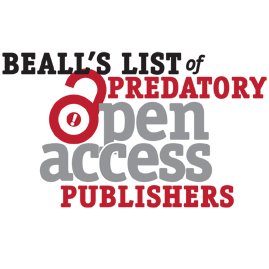New scholarly open-access publishers continue to appear at a fast pace. Here are three that launched recently — one with a generic name, one with a stolen name, and one with a suspicious name.
Here are the three publishers I will describe in this blog post:
The first thing you notice about this publisher is that its name doesn’t match its initials. Why isn’t it OAP? I think it’s a typo — a typo in their own name — and this is a bad sign.
Also. The name itself is bland. Can you imagine trying to find this publisher’s website through a Google search?
This publisher’s “contact us” page doesn’t list any physical location, but I think it’s based in Hong Kong. They claim they’re not charging author fees at this time, and they are trying to bait article submissions with the promise of a research fund for authors:
There is an OAE scientific financial support (about $10 000 000) for those authors who need to support their research.
To make itself look legitimate, this publisher created its own medical association, the Asia-Pacific Association of Medical Research. They publish eight medical journals. My advice: Don’t send any papers to this publisher.
This crazy publisher named itself after the open-source software it uses to host its journals. That’s right, Open Journals Systems is the name of the open-source journal management software made available by the Public Knowledge Project at Simon Fraser University in British Columbia.
If the format looks familiar, that’s because the software is free, and it’s used by dozens if not hundreds of open-access publishers, especially predatory ones. Few publishers change the settings and just use the defaults, as this one does.
I got one of their spam emails:
This is to inform you that we hereby call for the submission of academic/research papers for publication. Please visit the journal’s homepages for more information. All the journals is part of the Open Journal Systems/ Public Knowledge Project.
They publish four unneeded, broad-scope medical journals and one unneeded CAM journal. They claim to be based in “Manchester, United Kingdom.” Their website is minimalist, lacking much information conventionally provided by publishers. It’s also amateurish and unworthy of its name. My advice: Don’t even let your worst enemies publish here.
This brand-new publisher launched recently with 33 journals in the biomedical sciences, journals covering fields already saturated with existing periodicals. There’s no need for any of these.
The publisher claims it’s based in Troy, Michigan. Researchers who submit their work here will see it published rather quickly:
Authors are usually informed within 4-7 days about the acceptance or rejection of their article and if accepted it gets published in 2 days of acceptance.
What efficiency. I am not sure who’s behind this fleet launch of new journals. It smells like OMICS International, a company that already publishes hundreds of low-quality OA journals under many imprints. I think OMICS is trying to saturate the market to starve out the competition. My advice: It’s likely you’ll receive a spam email from this publisher. When it arrives, delete it.
Appendix: List of journals from each publisher:
A. Open Access Publisher
- Plastic and Aesthetic Research
- Neuroimmunology and Neuroinflammation
- Journal of Cancer Metastasis and Treatment
- Hepatoma Research
- Artery Plus
- Journal of Unexplored Cancer Data
- Translational Genetics and Genomics
- Stomatological Disease and Science
B. Open Journal Systems
- Annals of Complementary and Alternative Medicine
- Journal of Pharmacology and Clinical Sciences
- Journal of Microbiology and Antimicrobial Agents
- Annals of Medical and Biomedical Sciences
- Annals of British Medical Sciences
C. MedWin Publishers
- Advances in Clinical Toxicology
- Advances in Pharmacology and Clinical Trials
- Anaesthesia and Critical Care Medicine Journal
- Diabetis International
- Ecology and Toxicology Open Access
- Endocrinology Open Access
- Food Science and Nutrition Technology
- Gastroenterology & Hepatology International Journal
- International Journal of Biochemistry an Physiology
- International Journal of Cell Science
- International Journal of Forensic Sciences
- International Journal of Oceanography and Aquaculture
- International Journal of Veterinary Science and Technology
- Nanomedicine and Nanotechnology Open Access
- Neurology and Nephrology Open Access
- Open Access Journal of Dental Sciences
- Open Access Journal Cardiology
- Open Access Journal of Medicinal Chemistry
- Open Access Journal of Agricultural Research
- Open Access Journal of Gynecology
- Open Access Journal of Microbiology and Biotechnology
- Open Access Journal of Oncology
- Open Access Journal of Opthalmology
- Open Access Journal of Pharmaceutical Research
- Open Access Journal of Pulmonary & Respiratory Sciences
- Open Access Journal of Urology and Nephrology
- Orthopaedics and Rheumatology Open Access
- Otolaryngology Open Access Journal
- Pediatrics and Neonatal Biology Open Access
- Psychology and Research International Journal
- Public Health Open Access
- Vaccines and Vaccination Open Access
- Virology and Immunlogy Journal






















